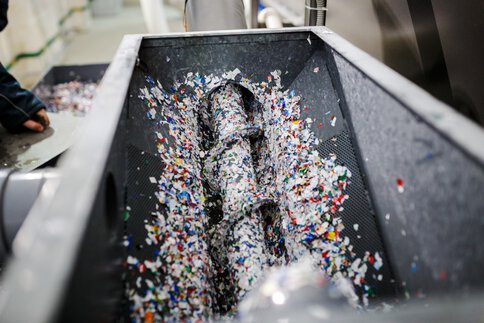Harmful substances in plastics: Analysis for consumer protection
However many applications there are for plastics, the list of the harmful substances contained in some of them is just as long. Whether it is plasticizers in toys which are a health hazard or flame retardants in insulating materials, which are harmful to the environment—many substances are already subject to regulations. Methods of polymer analysis are applied to verify whether plastic products meet the legal requirements.
Plasticizers are among the most controversial additives to plastics. Since they are normally not permanently bonded to the polymer, they gradually escape into the air—or are even directly ingested by the body, when plastic eating utensils are used or children suck their toys. Not all plasticizers are health hazards. But phthalates, which are teratogenic and reduce fertility, make up a large portion of them. They are banned in children’s toys, but are still rather frequently found in dolls, carnival masks and similar products. Plasticizers can be determined by gas chromatography or HPLC by mass spectrometry detection. There should be a verified laboratory blank, because plasticizers from laboratory bottles, gaskets and many other utensils cause cross contamination.
Some plastic products exude unpleasant odors. The method of choice for the analysis of plastic odors is the combination of gas chromatography and mass spectrometry. Unwanted odors may not only be caused by additives, but also by residues of monomers. Particularly fragrant plastics are no less alarming: added perfumes mask the plastic odor, often with a scent of flowers, vanilla or chewing gum. Since some fragrances have an allergenic effect, they are also subject to regulations in children’s toys.
Stabilizers and pigments containing heavy metals also constitute health hazards. It is mainly excessive cadmium contents which are often found, when plastic products are controlled. Handheld devices based on X-ray fluorescence analysis are useful for detecting them. As opposed to, e.g., atomic absorption spectroscopy—this test does not require the decomposition of specimens, but allows non-destructive measurements of element contents within seconds. There are also convenient devices for on-site control using near-infrared spectroscopy, which identifies types of plastics and additives. Such systems make consumer protection easier, because in view of the many plastic products in everyday life the inspectors need quick and easy measuring methods.
This might be also of interest to you
Plastics in the cycle
Reduce plastic waste and spare resources: Analysis for greater sustainability.

Find out about the trends and developments in fields of harmful substances in plastics at analytica:
polymer • monomer • plastics • polymer analysis • analysis • additives • softeners • phthalate • harmful substance • consumer protection • gas chromatography • HPLC • NIR spectroscopy • mass spectrometry • X-ray fluorescence analysis

